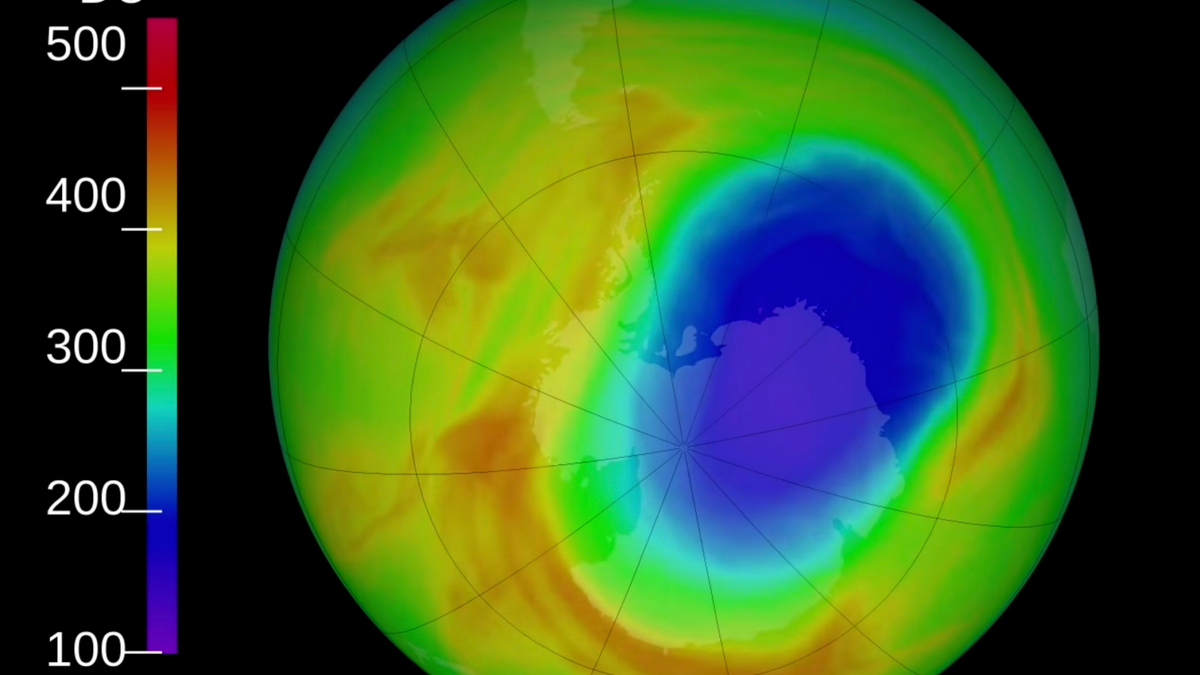Ozone layer is healing thanks to 'growing evidence' the Montreal Protocol works
A new study has noted that the 1987 Montreal Protocol was likely behind the continued recovery of our planet's ozone layer.
A newly published study notes that the ozone layer is continuing to heal and could recover completely, thanks to the global actions from the 1987 Montreal Protocol.
The research, published in Nature, notes that chemicals that caused the depletion of the ozone layer, known as chlorofluorocarbons (CFCs), also triggered a change in atmospheric circulation. However, since 2000, those changes have paused or "slightly reversed" because of the nearly 30-year-old international treaty, according to experts.
"This study adds to growing evidence showing the profound effectiveness of the Montreal Protocol," the study's lead author, Antara Banerjee, said in a statement. "Not only has the treaty spurred healing of the ozone layer, it's also driving recent changes in Southern Hemisphere air circulation patterns."

The ozone hole (blue) can be seen here over Antarctica on Oct. 4, 2019. (NASA Goddard/Katy Mersmann)
OZONE HOLE IS THE SMALLEST ON RECORD DUE TO 'RARE EVENT,' NASA SAYS
The ozone layer is approximately 7 to 25 miles above the Earth's surface and acts as a "sunscreen" for the planet, according to NASA. It keeps out harmful ultraviolet radiation from the sun that has been linked to skin cancer, cataracts, immune system suppression and can also cause damage to plants.
Previous studies have linked the trends in circulation to weather changes. In October 2019, a study published by NASA and the National Oceanic and Atmospheric Administration said unusual weather patterns in the upper atmosphere over Antarctica caused a drastic reduction in ozone depletion, leaving the ozone with the smallest hole seen since its discovery in 1982.
To prove that the ozone recovery is driving the changes in atmospheric circulation, Banerjee and the other researchers used a two-step technique known as detection and attribution. They determine what patterns in wind changes were unlikely because of natural changes and what could be attributed to human-related factors, such as changes in carbon dioxide.
Even though their computer simulations showed carbon dioxide emissions have continued to expand, only changes in the ozone layer could explain the "pause" that the experts identified.
"Identifying the ozone-driven pause in circulation trends in real-world observations confirms, for the first time, what the scientific ozone community has long predicted from theory," said one of the study's co-authors, John Fyfe, in the statement.
Though the researchers are optimistic about their findings, they caution the trends could reverse themselves again.
"We term this a 'pause' because the poleward circulation trends might resume, stay flat, or reverse," Banerjee added. "It's the tug of war between the opposing effects of ozone recovery and rising greenhouse gases that will determine future trends."
AIR POLLUTION MORE DEADLY THAN SMOKING, NEW STUDY FINDS
The 1987 Montreal Protocol was enacted after scientists disturbingly found a hole in the ozone over Antarctica and Australia in 1985. It was enacted by the United Nations Environment Program.
Former U.N. Secretary-General Kofi Annan called it "[p]erhaps the single most successful international agreement to date" and it has been widely regarded as successful, with the ozone continuing to recover each year.
A total of 197 countries, including the U.S. under former President Ronald Reagan, are signatories of the Montreal Protocol.
Skeptics have largely dismissed fears over man’s impact on global warming, saying climate change has been going on since the beginning of time. They also claim the dangers of a warming planet are being wildly exaggerated and question the impact that fossil fuels have had on climate change.




















